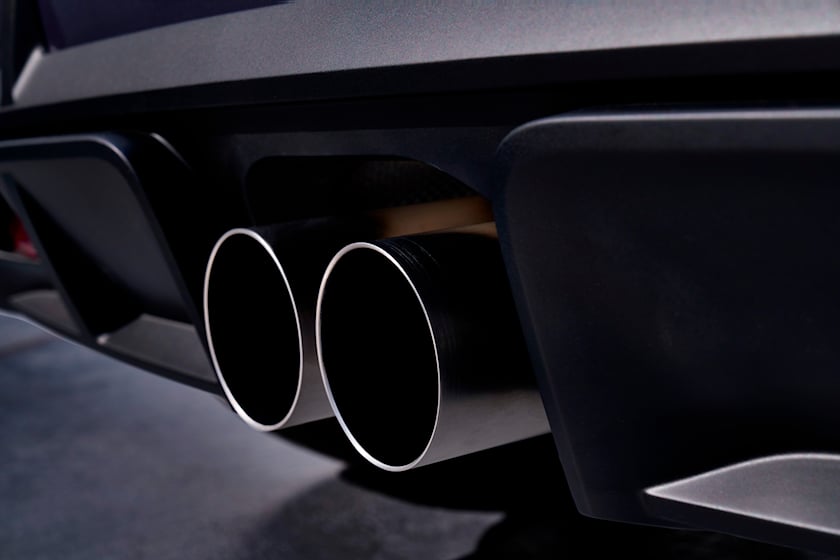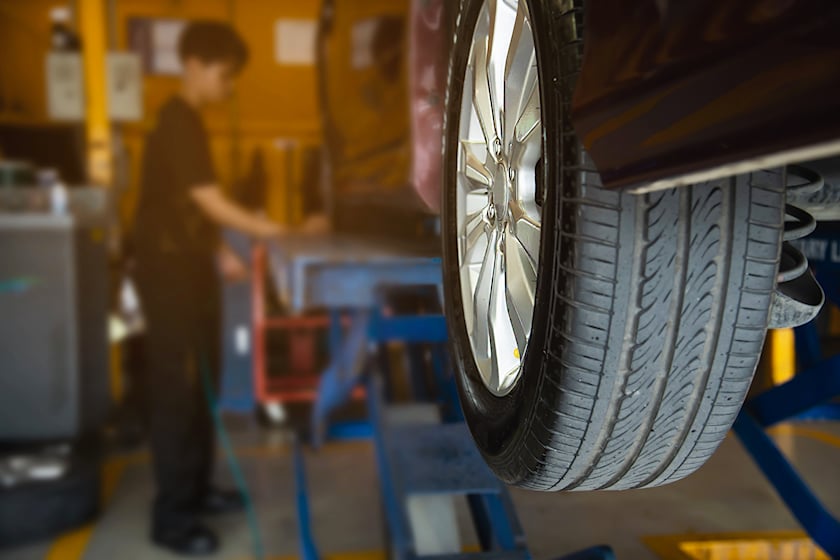Correct tire inflation can be the difference between life and death, or a hefty repair bill at the very least.
When it comes to daily wear and tear while driving, your tires take a lot of strain. And, as these are your contact points with the road and thus responsible for keeping you from lifting off the tarmac, it's essential to take good care of them. Making sure you check your tire pressure regularly is part of that process. Riding on tires that are set to the incorrect pressure, or which may be suffering from pressure loss from a slow puncture, significantly impacts how quickly they wear, which means replacing them more often, incurring greater costs to the lifetime ownership of your car at the very least, and the possibility of a flat or a blowout at the worst. This isn't just inconvenient; it can be deadly serious. Lastly, incorrect pressures affect the performance of your vehicle, too.
Considering how simple and easy it is to check tire pressure, it's something you should be doing fairly regularly. At the very least, a monthly checkup is all it takes, although we'd recommend checking every time you fill up your fuel tank. The best time to check tire pressure is at home while the tires are still cold - or even at the gas station closest to home. This should form part of your daily car care routine.
If your car has a tire pressure monitoring system (TPMS), you have the benefit of seeing in real-time when there is a loss in pressure. However, if the check tire pressure light on the dashboard is on, that's a clear sign to do a manual check to see what the problem might be. There are other warning signs you should keep an eye out for, too. These include:
Well, the warning signs above should already give you some idea as to why you should always ensure your tires have the recommended pressure. It can be something as small as saving you a few bucks on your fuel bill at the end of the month to anything as serious as damaging your rims by driving on a flat tire or losing control on overinflated tires that don't offer enough traction.
When tire air pressure is too low, the tire walls are less rigid and therefore flex more easily. This rapid movement causes excessive friction, which increases the temperature of the rubber. The result of this is normally nothing more serious than more rapid wear of the tires, but it can lead to a blowout if the temperature gets too high. Cold weather or snow will mitigate this to some degree, but don't use that as an excuse for driving with low tire pressure. In fact, if you live in a state with fluctuating temperatures, you should be checking your pressure more often, as this is one of the causes of pressure loss.
Overinflation is seldom a serious problem, but over a prolonged period of time, the damage can add up. This is because tires with high pressure have less tread making contact with the road. The middle of the tire, therefore, wears a lot quicker than the rest. Such tires will need to be replaced more often, and with less of the tire's tread making contact with the road, braking may be affected. It's clear that proper tire inflation is key to improved tire life and the overall quality of your driving experience. So, how easy is it to check your tire pressure?
Obviously, the easiest way is to check your on-board tire pressure system, if your car happens to come with one. This is usually accessed via the digital driver-information interface found in the main dashboard. More often than not, though, you will need to take a more analog approach. There are several ways you can DIY this, including:
Obviously, the most accurate way to measure tire pressure is with the tools specifically designed for that purpose. For this, you will need to know the recommended PSI for the tires. Every type of car and tire has its own PSI range, and you can normally find instructions for this in the user's manual, on the inside of the driver's door, or on the tires themselves. For example, your average SUV, like a Toyota RAV4, will be between 32 and 35 PSI.
It's worth noting that if you buy a car internationally, you should be aware that many countries measure tire pressure in 'bar' instead of pounds per square inch (PSI). Buying a new car and buying new tires requires a little bit of homework - check out our tire-buying guide here.
There are a few different types of tire pressure checkers out there with varying levels of complexity. If you want to know how to fix high or low tire pressure, some of these tools will allow you to do so. There are three main types of air pressure gauges:
It's vitally important to your safety and the performance of your car to keep an eye on tire pressure. Loss of traction, inability to brake, and wallowy handling are all possible side-effects of incorrectly inflated tires, not to mention the increased risk of a blowout. Check your tire pressure while the tires are still cold, and do so regularly, and you will also extend the life of your tires.
It is an abbreviation for pounds per square inch, which is a measurement of pressure. Every type of vehicle has a specific PSI. Passenger vehicles usually require between 32 to 35 PSI for their tires, while heavier vehicles, like a Ford F-150, need a lot more pressure in their tires to haul heavier loads and ferry a weightier chassis - usually around 55 PSI in the front and 75 PSI in the back.
Different cars and different tire sizes and types all have varying ideal tire pressures - and the load you are intending to carry will also affect the pressure which you should be running. Always check the guidelines in the owner's manual, and try not to deviate too far from the recommended figure. You can often find this info inside the driver-side door jam, or on the wheels themselves. You'll have to get up close and personal for the latter, as it isn't printed very big and may get lost among the other figures and letters.
The risk of this happening in regular driving conditions is rather low since most tires can handle up to 200 PSI before they burst. However, when driving, especially on a hot day, the tires heat up as they repeatedly make contact with the road. This friction causes the standard pressure to get a lot higher as hot air expands. Nevertheless, you will still have to overinflate your tires quite a bit for a blowout to be a genuine risk on a modern car.



